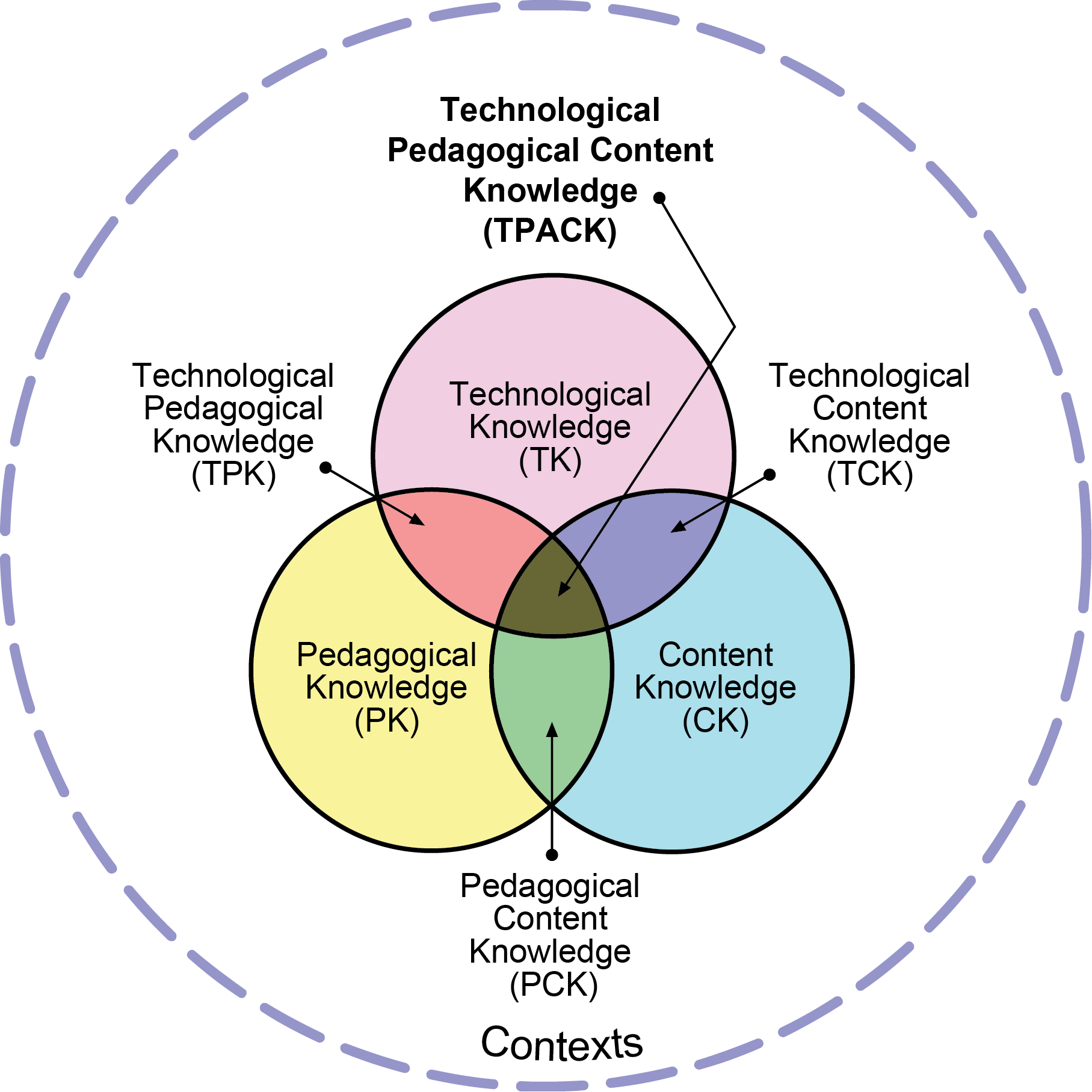
Reproduced by permission of the publisher, © 2012 by tpack.org
In a presentation given by Mishra & Koehler they state,
"Teaching with technology is a WICKED problem. WICKED problems require CREATIVE solutions, and teachers are designers of the Total PACKage."
The context of how we teach now with each of our students having access to a computer is very different from before. We no longer have to plan ahead for time in the lab and make sure we are at the right point of our instruction on a certain day, nor do we have to worry about only having a certain amount of time. The technology is there when we need it for how long we need it. With that, there is also often an expectation to use the technology we have access to. We need to plan to use it appropriately.
When we include technology in the mix we add a whole new level of material to include. Teaching and creativity have always gone together, but technology allows teachers more ways in which they can get creative. Also, we need to remember that this new level of material is constantly changing. What is new quickly becomes old. It isn't hard to look and find some sort of wheel, guide, or top 10 list that will show us the right answers for tech tools to use. The problem I have with these types of resources is they don't get to the point of HOW we use the technology. Just because we use it doesn't mean that we automatically have reached any higher order thinking skills, a new level on Blooms Taxonomy, or a certain area on the SAMR model. I fear that these types of resources can encourage us to put the tech first and search for any way we can use it. Instead, we need to have an idea of what we want to accomplish, and then pick the appropriate tool for the job. Mark Fijor gives a good example of this scenario here.
As we've moved through our digital conversion we have focused on using the SAMR model. We've used this because it is relatively simple to understand, and does not lead to attention on the tool being used. Instead, it always brings focus back to the task being performed. TPACK can be a nice companion to the SAMR model. It can help us keep in mind how our teaching, our content, and the technology can all blend together to enhance learning. By finding the right blend of all three components we can create very effective instruction. Both of these can help us as educators be creative in our instruction and work to find solutions that include technology to best reach our students.
Perhaps one portion of TPACK that can be overlooked is that the technology, pedagogy, and content knowledge all live inside a specific context. I realized how important that piece is when considering how I could apply TPACK. We have a school that offers an alternative setting for students. The learning is much more personalized and is becoming more digital as a way for students to be connected to school and work from other places and at their own pace and time. TPACK, and the idea of context, is very relevant in this situation. The teachers need to consider what technology they can include that will work best in the context they are working in. Technology allows the students to be connected to the content without stepping into the building. It allows the teacher to provide materials to the students digitally and the students a way to demonstrate and show their understanding. It isn't so much using an fancy app or website, but provides a way for the teaching and learning to occur. It is evident in every portion of the environment. The use of the technology is what allows this type of setting be possible, and the proper use is what will make it successful.

